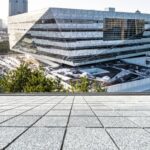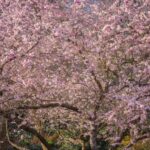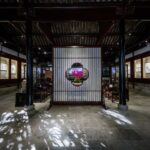The Yuhuangge, also known as Pufu Palace, is located on the west side of Fenglin Road in Shuangfeng Town, Taicang. It was first built in 1285. It was constructed in 1285, the 22nd year of Zhiyuan period of the Yuan Dynasty, by Zhou Jingqing, the disciple of Zhang Zongyan, the Celestial Master. It was originally named ‘Pufu Temple’. In 1310, Emperor Wuzong of the Yuan Dynasty bestowed the plaque ‘Daxuanyuan Pufu Temple’. In 1312, the 38th generation Celestial Master Zhang Yu cái wrote the horizontal plaque with black characters on a white background ‘Shuangfeng Blessed Land’, which was hung on the front door of Pufu Temple – Lingxin Gate. In 1317, Emperor Renzong of the Yuan Dynasty conferred the title of this temple as ‘Pufu Palace’. Inside the Lingxin Gate of Pufu Palace, there are four spiritual officers named Guan, Wen, Ma, and Zhao. After entering the Lingxin Gate, it is Yudao Street. Passing through the second gate, there are side chambers on both sides. In front of the ‘Wu Chao Gate’, there are bell tower and drum tower on both sides. On the door, there is a vertical plaque with gold characters: ‘Built by imperial order, Pufu Palace’, with the inscription ‘Qingning Baoyi Ningmiao Zhenren’ (Zhou Jingqing’s Taoist title). Entering the Wu Chao Gate and entering the courtyard is the ‘Lingxiao Treasure Hall’. The main hall is a two-story building. In the middle of the shrine on the upper floor, the Jade Emperor is enshrined. On both sides, there are Taibai Jinxing, the gods of thunder, electricity, wind, and rain, as well as Thousand-Handed Guanyin, Heavenly King Li with a Pagoda in his hand, and Erlang Shen. Therefore, it is also called ‘Shenxiao Wanling Pavilion’. In 1554, the Lingxiao Treasure Hall was burned down by Japanese pirates. In 1568, it was rebuilt and called ‘Yuhuangge’. On both sides of Pufu Palace, there are Yuzhi Temple, Ruizhi Tower, Xingxiu Hall, Chenghuang Temple and theater building. There are viewing buildings on the east and west sides. The palaces, towers, and buildings are arranged in close order, forming an extremely spectacular architectural complex. Close to the west of Pufu Palace, there is the ‘Shangshu Square’ of Chen Qia, the minister of war in Shuangfeng during the Yongle period of the Ming Dynasty. To the northwest, there is the square with the inscription ‘Shuangfengli’ written by Wen Zhengming. Both squares are famous stone squares in Shuangfeng. In 1994, it was approved for reconstruction. Covering an area of more than 30 mu, it mainly includes Yuhuangge, Cijian Temple, and Bihuang Temple. According to legend, Emperor Jianwen of the Ming Dynasty once led his ministers to take refuge here. Opening hours: Open from 9:00 to 18:00 all year round.
Yuhuangge
The Yuhuangge, also known as Pufu Palace, is located on the west side of Fenglin Road in Shuangfeng [...]









